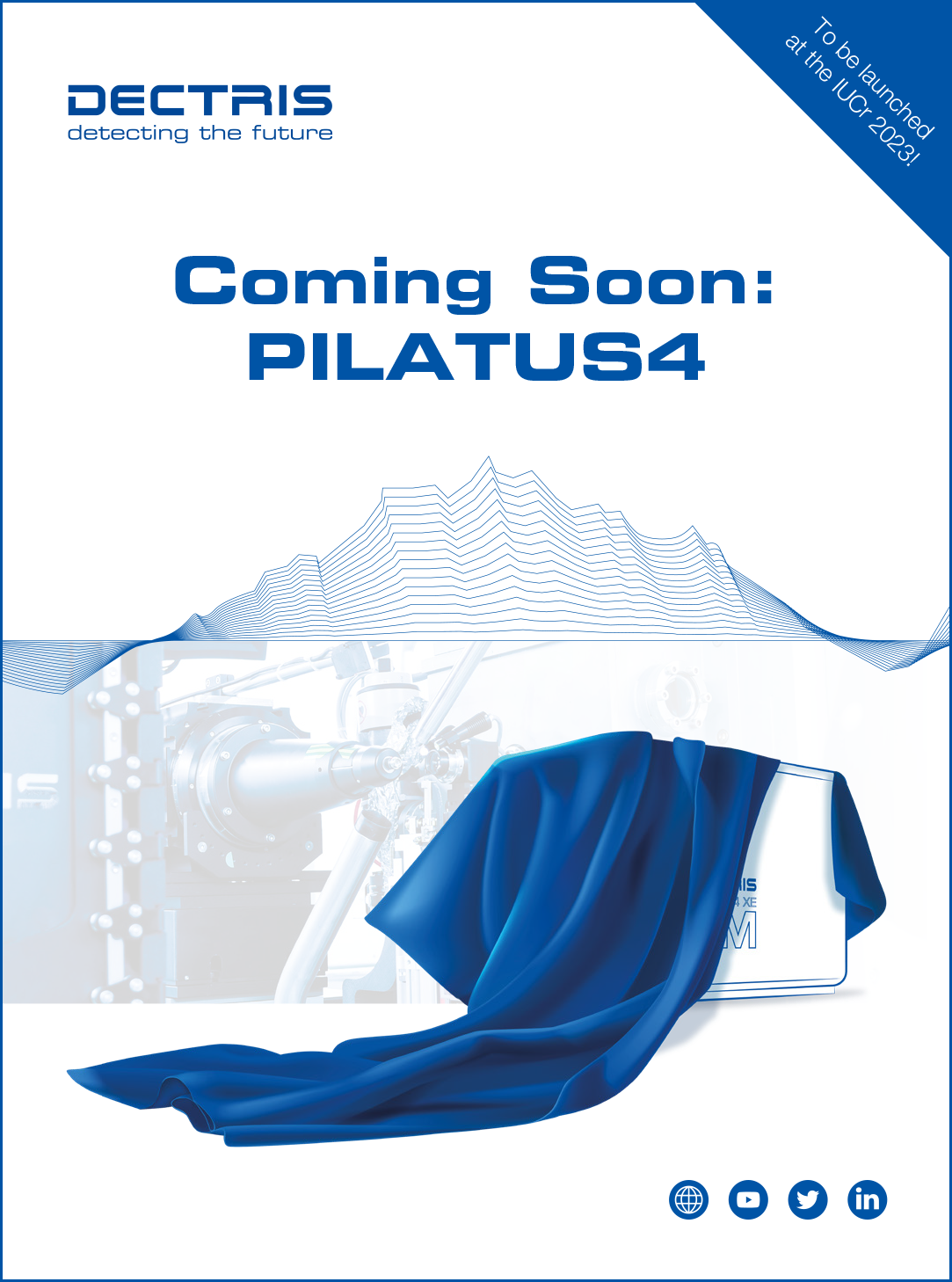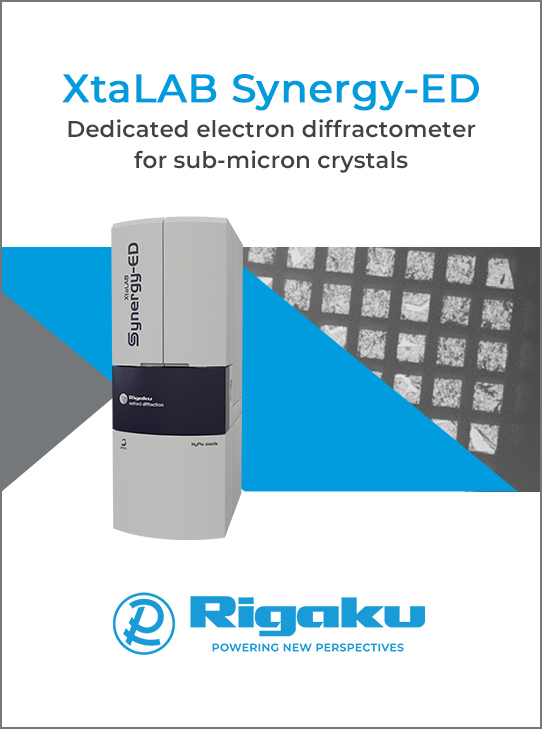


Feature article
Golden Oldies and their continued role in education
![Thumbnail [Thumbnail]](https://www.iucr.org/__data/assets/image/0008/156833/thumbnailgolden-oldies.jpg)
Acta Crystallographica Section E: Crystallographic Communications has recently launched a special virtual issue on Modern approaches and tools for teaching crystallography (edited by G. Diaz de Delgado and S. Perkin), introducing a new category of articles aiming at education matters, including “experiences of teaching in a pandemic and accessing diffraction equipment remotely, as well as practical advice on all aspects of crystal structure determination” (read the Foreword here). Whereas Acta E’s education articles focus particularly on chemical crystallography, our paper, which highlights ten seminal crystallographic articles, is obviously much broader, being across the science disciplines and also including the philosophy of science (Massera & Helliwell, 2023).
We should explain first why we wrote this Golden Oldies article. Quoting from it: “One of us (CM) had the idea and invited JRH to join in. We had already discovered our similar approaches to our science, of using multiple methods to move beyond the precision of one method alone (crystallography) and reach accuracy when we both taught at the European Crystallography School 6 (‘ECS6 Budapest’). Yet our areas of science were distinctly different, smaller and bigger molecules, respectively, and thereby nicely complementary for this article. The choices of these publications are inevitably our personal ones. We first opted for those authored only by individuals who are no longer with us. This is a neat mechanism to minimize the risk of losing our friends. Secondly, a maximum of ten articles is going to be woefully inadequate, so we foresee a series of future articles from colleagues who will make their own top ten selections. As our overall aim is education, with a historical focus, we draw attention to the article by Jenny Glusker (1998) ‘The teaching of crystallography: A historical survey’; her selection of references provides an independent suite of examples”. For each of our choices, we created a new title that emphasizes how the paper’s importance worked out from a present-day perspective and added a brief biographical sketch of the authors. We dedicated our paper to the memory of Olga Kennard for her contributions to disseminating quality data in structural science.
It became clear to us from the reactions of the editor, Graciela Diaz de Delgado of the Universidad de Los Andes Mérida in Venezuela, and the referees that they rather liked our article. That said, we did have to respond to some obviously learned comments from all three! Also, as one of us is on Twitter (@HelliwellJohn), the tweets about our article coming online attracted a lot of likes (>100) and views (>9000). Then there was an enthusiastic note about it on LinkedIn. At this point, thanks are due to the IUCr Newsletter Editor, Mike Glazer, for inviting us to write a short note to highlight our paper.
The ten articles we selected, following a historical timeline, are as follows:
- Ewald (1969, but which is really 1912 to 1914) Reciprocal space and Ewald’s sphere
- W. L. Bragg (1913) The first X-ray crystal structures
- Lonsdale (1929) The determination of the planar structure of benzene
- Banerjee (1933) The first description of a direct method of phasing
- Megaw (1934) The nature of ice and the importance of collecting crystals in their mother liquor
- Bernal & Crowfoot (1934) The initiation of protein X-ray crystallography
- Hughes (1941) The first least-squares refinement of a crystal structure against its X-ray diffraction data
- Bijvoet et al. (1951) Determination of the absolute configuration of optically active compounds by means of X-rays
- Okaya & Pepinsky (1956) Solution of the phase problem by altering the X-ray wavelength
- Coppens (1977) Charge density analysis to elucidate the nature of chemical bonding
It proved a very interesting commission to write this article. Overall, we sought to describe where in the philosophy of science each article fitted. A paradigm shift, maybe? We assigned this accolade to W. L. Bragg and his 1913 paper on the alkali halide crystal structures (Fig. 1).
![[Fig. 1]](https://www.iucr.org/__data/assets/image/0007/156976/Fig.-1.jpg)
Mainly we thought our chosen articles were examples of incremental science, although rather large increments and maybe even leaps forward. They were articles that were examples of science pull, even well ahead of their time, as well as technology push. We tried to convey the scientific context in which all this crystallographic research was conducted, and we also noticed the importance of community agreed standards, i.e. consensus, such as the IUCr checkCIF and the PDB Validation Report procedures. These had been developed by extensively discussing topics and challenges together in the IUCr Journals and the IUCr Commissions, as well as the PDB’s Expert Advisory Groups.
Suffice to say we hope that you enjoy our article.
References
Banerjee, K. (1933). Proc. R. Soc. London Ser. A, 141, 188–193.
Bernal, J. D. & Crowfoot, D. C. (1934). Nature, 133, 794–795.
Bijvoet, J. M., Peerdeman, A. F. & van Bommel, A. J. (1951). Nature, 168, 271–272.
Bragg, W. L. (1913). Proc. R. Soc. London Ser. A, 89, 248–277.
Coppens, P. (1977). Angew. Chem. Int. Ed. Engl. 16, 32–40.
Ewald, P. P. (1969). Acta Cryst. A25, 103–108.
Glusker, J. P. (1998). Acta Cryst. A54, 707–715.
Hughes, E. W. (1941). J. Am. Chem. Soc. 63, 1737–1752.
Lonsdale, K. (1929). Proc. R. Soc. London Ser. A, 123, 494–515.
Massera, C. & Helliwell, J. R. (2023). Acta Cryst. E79, 580–591.
Megaw, H. D. (1934). Nature, 134, 900–901.
Okaya, Y. & Pepinsky, R. (1956). Phys. Rev. 103, 1645–1647.
Chiara Massera is at the Dipartimento di Scienze Chimiche, della Vita e della Sostenibilità Ambientale, Università di Parma, Italy ([email protected]), and John R. Helliwell is at the Department of Chemistry, University of Manchester, UK ([email protected]).
Copyright © - All Rights Reserved - International Union of Crystallography







